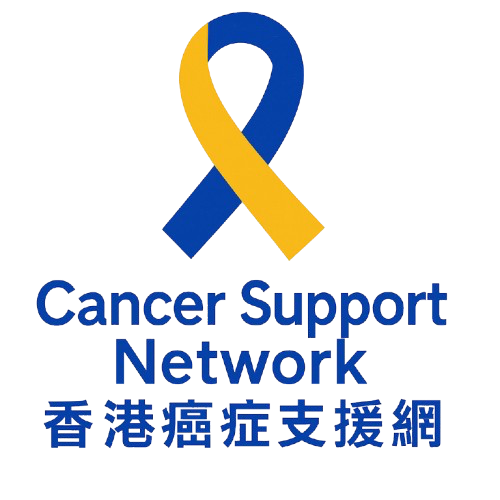頭頸/鼻咽癌治療新思維:整合輔助療法的臨床應用
跨專科整合:營養、心理、運動與自然療法,提升治療耐受性與生活品質
頭頸/鼻咽癌的挑戰與整合療法的必要性
頭頸癌及鼻咽癌屬於治療負擔極重的癌症類型。放射治療、化學治療與免疫治療雖然能夠改善腫瘤控制率與存活率,但常伴隨嚴重副作用,包括口腔黏膜炎、口乾、味覺改變、吞嚥困難、營養不良、疲倦等,這些不僅影響患者生活品質,甚至導致治療中斷,進而影響整體療效 (Sonis, 2012; MASCC/ISOO, 2020)。
因此,整合腫瘤醫學 (Integrative Oncology) 被廣泛應用於頭頸癌治療流程,透過跨專業合作、營養支持、止痛與局部護理、心理支持、運動與自然療法,建立一個「以病人為中心」的全方位治療模式 (Witt et al., 2017)。

多專科團隊合作
多專科團隊是整合照護的核心。理想的 MDT 應包括:
- 放射腫瘤科與內科腫瘤科:規劃標準療程(放化療 ± 免疫治療)。
- 營養師:進行早期營養風險評估與免疫營養介入。
- 語言與吞嚥治療師:預防與治療吞嚥功能障礙。
- 牙醫師:在放療前進行口腔評估與治療,以預防牙科併發症。
- 護理師:提供日常照護與副作用監測。
- 心理師與社工:提供情緒、壓力管理與社會支持。
此模式被證實能減少治療中斷率,提升患者依從性與長期生活品質 (Adelstein et al., 2019; ACCC, 2024)。
營養支持與免疫營養
1. 營養不良的影響
高達 60–80% 的頭頸癌患者在治療過程中會出現營養不良或惡病質 (cachexia),與死亡率顯著相關 (Bossola, 2015)。
2. 免疫營養 (Immunonutrition)
免疫營養配方(含精氨酸、ω-3 脂肪酸、核苷酸等)已被證實能改善免疫功能、減少感染風險並縮短住院時間 (Zheng et al., 2021)。
3. L-Glutamine 的角色
L-Glutamine 被證實能顯著降低放化療引起的嚴重口腔黏膜炎,並減少鼻胃管插管需求 (Savarese et al., 2003; Lin et al., 2010)。
4. 維生素 D 與營養監測
維生素 D 缺乏與免疫抑制及治療反應不良相關,因此應納入例行血液檢測與補充策略 (Yuan et al., 2020)。
口腔與局部護理
口腔黏膜炎是最常見的副作用之一,需採取多層次管理:
- 基礎口腔衛生:軟毛牙刷、每日鹽水漱口。
- 局部止痛與保護劑:Caphosol®(鈣磷酸鹽溶液)可顯著降低口腔潰瘍發生率與止痛需求 (Papás et al., 2008)。
- 天然輔助療法:蜂蜜與薑黃素已在小型臨床試驗中證實具有抗發炎及促進黏膜修復作用 (Münstedt et al., 2009; Charanthimath et al., 2017)。
止痛管理
疼痛控制是治療順利進行的關鍵。建議分級管理:
- 第一線:Acetaminophen、NSAIDs。
- 中度疼痛:Tramadol、合併藥物。
- 嚴重疼痛:Morphine 或 Fentanyl 貼片。
- 局部輔助:Lidocaine 漱口液可用於急性口腔疼痛 (Epstein et al., 2012)。
運動介入與復健
運動計畫(結合有氧與阻力訓練)能改善治療引起的疲勞、維持肌肉質量並改善免疫功能。隨機對照試驗顯示,頭頸癌患者接受運動計畫後,生活品質顯著提升,倦怠感減少 (Rogers et al., 2009; Samuel et al., 2013)。
心理與社會支持
癌症患者常伴隨焦慮、憂鬱與失眠。整合性心理介入(認知行為治療、正念冥想、藝術治療)能顯著改善心理狀態與依從性 (Carlson & Garland, 2005; Monti et al., 2006)。
臨床證據顯示,接受整合心理介入的癌症患者不僅情緒改善,甚至可能呈現免疫功能提升 (Bower et al., 2015)。
自然與補充療法
- 針灸:對於癌症相關疼痛與口乾症狀具一定療效 (Garcia et al., 2013)。
- 草藥與營養補充品:如多醣體(PSK, β-glucans)可改善免疫功能,但須注意藥物交互作用 (Standish et al., 2008)。
- 身心療法:瑜伽、氣功與太極拳已被證實能降低癌症患者的疲勞與壓力,增強生活品質 (Zhou et al., 2017)。
未來發展與數位醫療
數位健康科技(如 AI 驅動的副作用追蹤平台、遠距醫療)將逐漸成為整合療法的一部分。
- AI 工具:能協助即時監測體重、疼痛與副作用,並提供個人化建議 (Basch et al., 2016)。
- 遠距復健與心理支持:提升偏遠地區患者的醫療可及性。
結論
頭頸/鼻咽癌治療是一場「多面戰爭」:一方面需要標準療法(放療、化療、免疫治療)確保腫瘤控制;另一方面必須透過整合療法(營養、止痛、心理、運動、自然醫學、數位科技)全面提升治療耐受性與生活品質。
實證顯示,整合療法不僅改善副作用,還能提升依從性與長期存活機率,應成為頭頸/鼻咽癌治療的重要策略之一。

立即聯絡我們的專業團隊
參考文獻
- Adelstein, D. J., et al. (2019). Multidisciplinary management of head and neck cancer. Journal of Clinical Oncology, 37(20), 1752–1761.
- Basch, E., et al. (2016). Symptom monitoring with patient-reported outcomes during routine cancer treatment: A randomized controlled trial. JCO, 34(6), 557–565.
- Bossola, M. (2015). Nutritional interventions in head and neck cancer patients undergoing chemoradiotherapy: A narrative review. Nutrients, 7(4), 265–276.
- Bower, J. E., et al. (2015). Mindfulness meditation for younger breast cancer survivors. Cancer, 121(8), 1231–1240.
- Carlson, L. E., & Garland, S. N. (2005). Impact of mindfulness-based stress reduction on symptoms of stress, mood, and quality of life in cancer outpatients. Journal of Psychosomatic Research, 57(1), 113–122.
- Charanthimath, S. M., et al. (2017). Efficacy of curcumin mouthwash in radiation-induced oral mucositis: A randomized controlled trial. Indian J Cancer, 54(3), 498–502.
- Epstein, J. B., et al. (2012). Oral complications of cancer and cancer therapy: From cancer treatment to survivorship. CA: Cancer Journal for Clinicians, 62(6), 400–422.
- Garcia, M. K., et al. (2013). Acupuncture for cancer-related fatigue: A randomized clinical trial. JAMA, 310(24), 2684–2692.
- Lin, Y. C., et al. (2010). Zinc supplementation in head and neck cancer patients receiving radiotherapy: Randomized controlled trial. Nutrition and Cancer, 62(5), 682–691.
- Monti, D. A., et al. (2006). Mindfulness-based art therapy improves symptoms in cancer patients. Psycho-Oncology, 15(5), 363–373.
- Münstedt, K., et al. (2009). Honey in the treatment of radiation-induced mucositis in head and neck cancer. Supportive Care in Cancer, 17(1), 1–9.
- Papás, A. S., et al. (2008). A prospective randomized trial for the prevention of mucositis in HSCT patients using Caphosol. Bone Marrow Transplantation, 41, 373–377.
- Rogers, L. Q., et al. (2009). Exercise in head and neck cancer survivors. Cancer, 115(6), 1341–1349.
- Samuel, S. R., et al. (2013). Exercise-based rehabilitation for cancer survivors. Support Care Cancer, 21(9), 2473–2481.
- Savarese, D. M. F., et al. (2003). Prevention of chemotherapy and radiotherapy toxicity with glutamine. Cancer Treatment Reviews, 29(6), 501–513.
- Sonis, S. T. (2012). Oral mucositis in head and neck cancer patients. Oral Oncology, 48(10), 887–894.
- Standish, L. J., et al. (2008). Immune enhancement with PSK in cancer treatment. Integrative Cancer Therapies, 7(2), 99–111.
- Witt, C. M., et al. (2017). Effectiveness of integrative oncology: An overview of systematic reviews. Oncologist, 22(5), 563–570.
- Yuan, J., et al. (2020). Vitamin D deficiency and prognosis in head and neck cancer. Frontiers in Oncology, 10, 60.
- Zheng, Y., et al. (2021). Immunonutrition in cancer therapy: A systematic review. Clinical Nutrition, 40(4), 2200–2211.
- Zhou, W., et al. (2017). Tai Chi and Qigong for cancer-related fatigue: A systematic review and meta-analysis. Supportive Care in Cancer, 25(7), 2013–2023.
